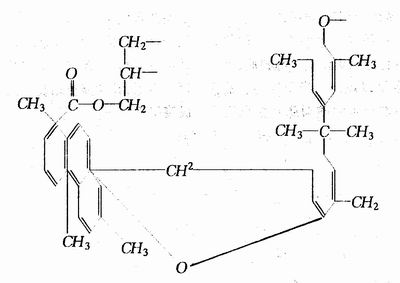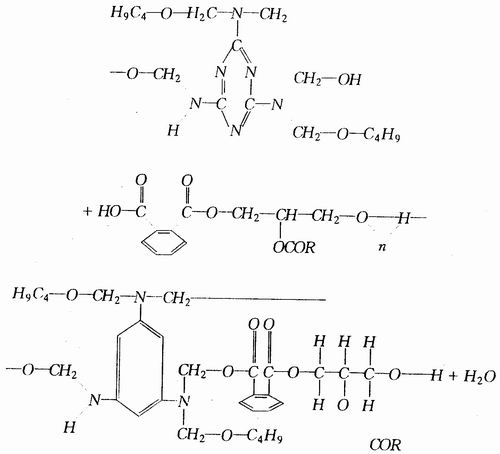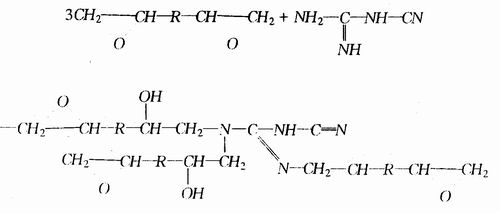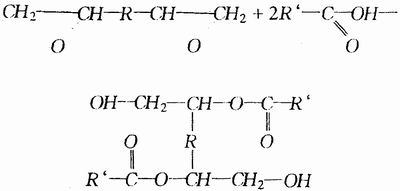Comparison of the performance of four major exterior coatings commonly used in domestic steel drums
Shanghai Xugong Coating Technology Co., Ltd. Xu Guoxing
The main function of the steel drum outer coating is to protect the steel drum and beautify the appearance, and to have the characteristics of wear resistance, collision resistance, aging resistance and three-proof (moisture proof, mold proof, salt spray resistance). Of the steel drum exterior coatings currently in use in the country, there are very few that fully meet these conditions. The following is a description of the properties of phenolic paints, alkyd paints, amino paints and powder coatings commonly used in China.
First, phenolic paint
Commonly used white dry phenolic paints are classified into pure phenolic paints, phenolic blend paints and phenolic enamel paints. The phenolic lacquer is of course a phenolic resin as a film former. The resin is a polymer compound obtained by condensing a phenol with an aldehyde in the presence of a catalyst, and is mainly formed by reacting phenol with formaldehyde, and other phenols such as cresol, xylenol, resorcin, and diphenol. Propane, p-phenylphenol, p-tert-butylphenol, p-tert-amylphenol, etc., aldehydes such as formaldehyde, furfural, and the like. According to the molar ratio of phenol to aldehyde, the kind of phenol and aldehyde used, the type of catalyst and the reaction conditions, it can be made into a series of resins with different properties, such as thermoplastic, thermosetting, politically, alcohol soluble, water soluble. , oil soluble, liquid, solid, powder, and the like.
The phenolic resins used in general coatings are all oil-soluble, while the oil-soluble phenolic resins are also classified into pure phenolic resins, rosin-modified phenolic resins, and other phenolic resins (such as butanol etherified phenolic resins).
A coating having a pure phenolic resin as a film-forming material is called a pure phenolic lacquer. It is a phenolic resin made by using a certain carbon number alkyl substituted phenol or a phenyl substituted phenol such as p-tert-butylphenol or p-phenyl phenol and methyl. This resin can be directly modified without using rosin. The vegetable oil reacts to form a paint, so the paint has good water resistance, oil resistance, acid resistance and solvent resistance. However, due to the relatively high price, the domestic steel drum industry is less used.
A paint made of a small amount of phenolic resin (or no phenolic resin) and a drying oil such as linseed oil, tung oil, etc., which are ground and added with pigments, solvents, drier, etc., is called phenolic blending paint, if resin and dry oil The ratio of more than 1:2 is called enamel. The outer coating of steel drum used by our steel drum factory is phenolic blending paint, which is made of rosin modified phenolic resin. The structure of the resin is as follows:

The rosin modified phenolic resin is a resin obtained by modifying a condensate of a phenol and an aldehyde with rosin and then esterifying with glycerin, which is a yellowish to reddish brown solid, and the phenolic resin is about 25±. [()%, rosin modified phenolic resin and tung oil equal to the oil is heated and added to the organic solvent and drier to become a novolac, if it is added as a paint slurry to the pigment after grinding, and then add The organic solvent becomes a phenolic blend paint.
Phenolic blending paint has the characteristics of high hardness, good gloss, weather resistance, good adhesion, water resistance, acid and alkali resistance and insulation. The disadvantage is that the color is deep, and the paint film is easy to yellow in the aging process, so it is not suitable to manufacture white and light. Paint. Such coatings are cheap and have good corrosion resistance. Therefore, steel coatings can be used for such occasions.
Second, alkyd paint
Alkyd paint is a paint mainly composed of an alkyd resin. The alkyd resin is made by polycondensation of a polyhydric alcohol, a polybasic acid and a fatty acid. The most commonly used polyols are glycerin, pentaerythritol, others include trimethylolpropane, sorbitol, xylitol, etc.: The most commonly used polyacids are phthalic anhydride, others are also phthalic acid, terephthalic acid. , maleic anhydride, partial: agricultural tricarboxylic anhydride, hexachlorophthalic anhydride and sebacic acid. Only the resin obtained by reacting a polyhydric alcohol with a polybasic acid is collectively referred to as a polyester resin, and a unit acid component (such as vegetable oil fatty acid, synthetic fatty acid, rosin acid, etc.) is added to the polyester resin to be modified to become an alkyd resin. The commonly used unit acid is in the form of oil, such as tung oil, linseed oil, eucalyptus oil, dehydrated castor oil, castor oil, soybean oil, coconut oil, etc.; the unit acid in the form of acid is hydrolyzed by the above oil. The various mixed fatty acids obtained. In the actual manufacture of alkyd resins, vegetable oils are often used directly because the main chemical composition of vegetable oils is triglycerides, and the most widely used polyol is glycerol.
Alkyd resins can be varied according to different requirements, and the formulation and manufacturing process can be varied to obtain a wide range of products. The alkyd resin itself is a separate paint. The paint made of it is not easy to age, has good weather resistance, long-lasting gloss, and the film is flexible and wear-resistant. The disadvantage of resisting mineral oil and alcohol is that the paint film is soft. Easy to wrinkle, completely dry for a relatively long time, not scratch resistant. At the same time, since the molecular structure contains an ester group, it is poor in water resistance, moisture resistance, and alkali resistance. Moreover, the resistance to esters and ketones is very poor.
Third, amino baking varnish
The amino baking varnish used in our steel drum industry is a lacquer with a crosslinked product of an amino resin and an alkyd resin as the main film-forming material, so it is actually called an amino alkyd baking varnish, which is one of the main varieties of baking varnish. According to the ratio of the amount of the amino resin to the alkyd resin, there are a high amino group (amino resin: alkyd resin = 1:2.5), a medium amino group (amino resin: alkyd resin = 1:2.5-5) and a low amino group (amino resin: Alkyd resin = l: 5 - 7.5) three types. Its curing is by heating the amino group. The etherification reaction between the methylol group in the resin and the hydroxyl group in the alkyd resin is carried out by a polycondensation reaction of an amino resin. In general, the more the amount of the amino resin is used, the better the gloss, hardness, water resistance, oil resistance, and insulation of the coating film, but the flexibility decreases, and the brittleness is deteriorated, and the adhesion is also deteriorated.
The amino resin used in the amino baking varnish commonly used in our steel drums is a butanol etherified melamine formaldehyde resin. Most of the alkyd resins used are short oily semi-dry soybean oil as a modified oil. Although soybean oil alkyd resin is not ideal for yellowing resistance in white paint, it should be said to be better in color paint. However, there are not many cases where the outer coating of steel drums is white, and the amino alkyd baking varnish made of the two resins is used for steel drums, and its performance price ratio is the highest, and its crosslinked membrane mechanism is as follows:

The paint of this amino alkyd baking varnish is characterized by fullness and bright color; the film is tough, the adhesion is good, the mechanical strength is high; the weather resistance is good, the powder resistance, the crack resistance and the wet and dry performance are good, after drying, Sticky; has certain water resistance, acid resistance, alkali resistance, oil resistance and good electrical insulation properties; and good construction performance, the paint film is not easy to wrinkle, easy to level.
The disadvantage is that it can not be dried at room temperature, and it needs to be baked at 100-120 ° C for 1.5-2 hours according to its standard curing conditions. (Although there are also low-temperature fast-setting amino baking varnishes, the cost performance is relatively poor for steel drums. ). Temperature and time need to be strictly controlled, the temperature is low, the film is easy to stick when the time is short; the paint film is brittle, but because the current steel drum production line in China cannot have such a long baking time, the steel barrel coating research Part I"I test, baked at 175-180 ° C for 10 minutes, the indicators can also be close to the performance under standard curing conditions.
In addition, in recent years, a two-component amino lacquer cured at room temperature has appeared, but the amino resin here is not used as a curing component of the alkyd resin, but acts as a leveling agent toughening agent, and The amino resin and the alkyd resin in the lacquer are also specially treated, and the treated resin can be cured by an adduct of an aromatic isocyanate, which can be carried out at room temperature. In addition to the general properties of aminoalkyd baking varnish, this kind of amino lacquer also has more outstanding chemical resistance and bright paint film, and has dry parts for 5 minutes at room temperature and half an hour. Its price is similar to that of amino alkyd baking varnish. Because of its superior anti-corrosion properties and the enamel-like paint film, the steel drums coated with this room temperature curing two-component amino paint have been used by Henkel and U. Dijia" and other foreign companies adopted. It has been widely used on the top of some barrels filled with chemical liquids and corrosive liquids (the barrel is a phenolic paint). For the barrel-making factory without baking conditions, it provides a way to improve the quality of the steel drum coating. It is also a way to save energy and reduce costs for the barrel making plant with baking equipment.
At present, many domestic steel drum spraying lines can not spray the barrel body and the bottom of the barrel and cover three sides at the same time, and it is inconvenient to spray into the drying tunnel twice. In this case, if the customer specifies the use of baking varnish, the bottom part (or cover) may not be sprayed first, and the other parts are sprayed with baking varnish and baked in the drying tunnel, and then sprayed with the alkali-cured amino lacquer, which avoids the two upper and lower lines. The inconvenience.
Fourth, powder coating
Powder coating is a coating that is completely free of organic solvents, coated in powder form and baked to form a coating. It saves energy and resources, eliminates environmental pollution, can be recycled with excess powder, and has high mechanical strength. Features. At present, the powder coatings used in the exterior coating of steel drum industry in China are mainly thermosetting epoxy, polyester, acrylic acid and epoxy polyester. Their respective performance is as follows:
l, epoxy powder coating
Good adhesion and mechanical strength; excellent chemical resistance and corrosion resistance; poor weather resistance.
2, polyester powder coating
The coating film is excellent in appearance, strength and weather resistance; alkali resistance, stain resistance and surface hardness are poor.
3. Acrylic acid powder coating
Excellent weather resistance, stain resistance and hardness; corrosion resistance and mechanical strength are not good.
4, epoxy polyester powder coating
It combines excellent adhesion, corrosion resistance, mechanical properties and decorative, weathering and chemical resistance of polyester powder coatings.
It is not difficult to see that epoxy polyester powder coating is most suitable for coating outside the steel drum. However, there are many types of epoxy resins and polyester resins, and the performance of powder coatings made of different types of epoxy resins and polyester resins is different. At present, most of the epoxy resins used in the manufacture of powder coatings in China are bisphenol A type, such as E-20 (601), E-12 (604), E-06 (607), E-03 (609), etc. The molecular weights vary. The molecular weight is too low, the powder coating produced has a low melting point, the powder is easy to knot, the mechanical properties of the coating after the powder is solidified are poor; the molecular weight is too high, the powder coating produced has a high melting point, and the leveling property of the powder coating is poor. The polyester resin for producing an epoxy polyester powder coating is classified into a carboxyl group-containing polyester resin and a hydroxyl group-containing polyester resin.
According to the test and test, for the outer coating of steel drum, bisphenol A type E-12 (604) epoxy resin and carboxyl group with acid value of 20-100 mgKOH/g and number average molecular weight between 2000-8000 Epoxy polyester powder coatings made of polyester resin are most suitable for relative performance.
The curing of this powder coating consists of two parts, one of which is the crosslinking of epoxy resin with dicyandiamide:


The network structure formed by this crosslinking reaction provides high adhesion of the coating film and excellent corrosion resistance and mechanical properties. Another part of the curing reaction is the crosslinking of epoxy resin and polyester resin:

Wherein R has the same meaning as above; R' is a polybasic group of polyester
The network structure formed by this crosslinking reaction provides excellent weather resistance, decorative properties and mechanical properties of the coating film.
The two reactions are simultaneous and can be carried out on the same epoxy resin molecule, that is, two epoxy groups on the same epoxy molecule can be cross-linked with dicyandiamide, and the other can be polymerized. The ester resin is crosslinked; of course, both epoxy groups on the same epoxy molecule can also be crosslinked with dicyandiamide or both with the polyester resin.
Epoxy polyester powder coatings, like other powder coatings, have common defects, such as excessive film thickness (one of the reasons for high cost), strict requirements for pre-treatment of steel drums, difficulty in color change, etc. In addition to the pre-treatment of the external technology, the problem has been solved, the film thickness can be close to the traditional solvent-based coating, and the color change operation is also simplified. For example, Japan uses electric field curtains and barrel filter recycling to simplify the color change operation.
Powder coating method In addition to the electrostatic spraying commonly used in China, water slurry method and powder electrophoresis method have appeared in recent years. The water slurry method is to change the pulverization process of the powder coating into the water system dispersion process, and then spray the water dispersion system of the powder coating, and the spraying method only needs to slightly modify the current solvent-based coating spraying device. The powder electrophoresis method converts the powder into a cationic dispersion in water for electrophoretic coating. If our steel drum industry can achieve the water slurry spray coating, it will definitely be a huge driving force for the promotion of powder coating.
Ningbo XISXI E-commerce Co., Ltd , https://www.petspetsproducts.com